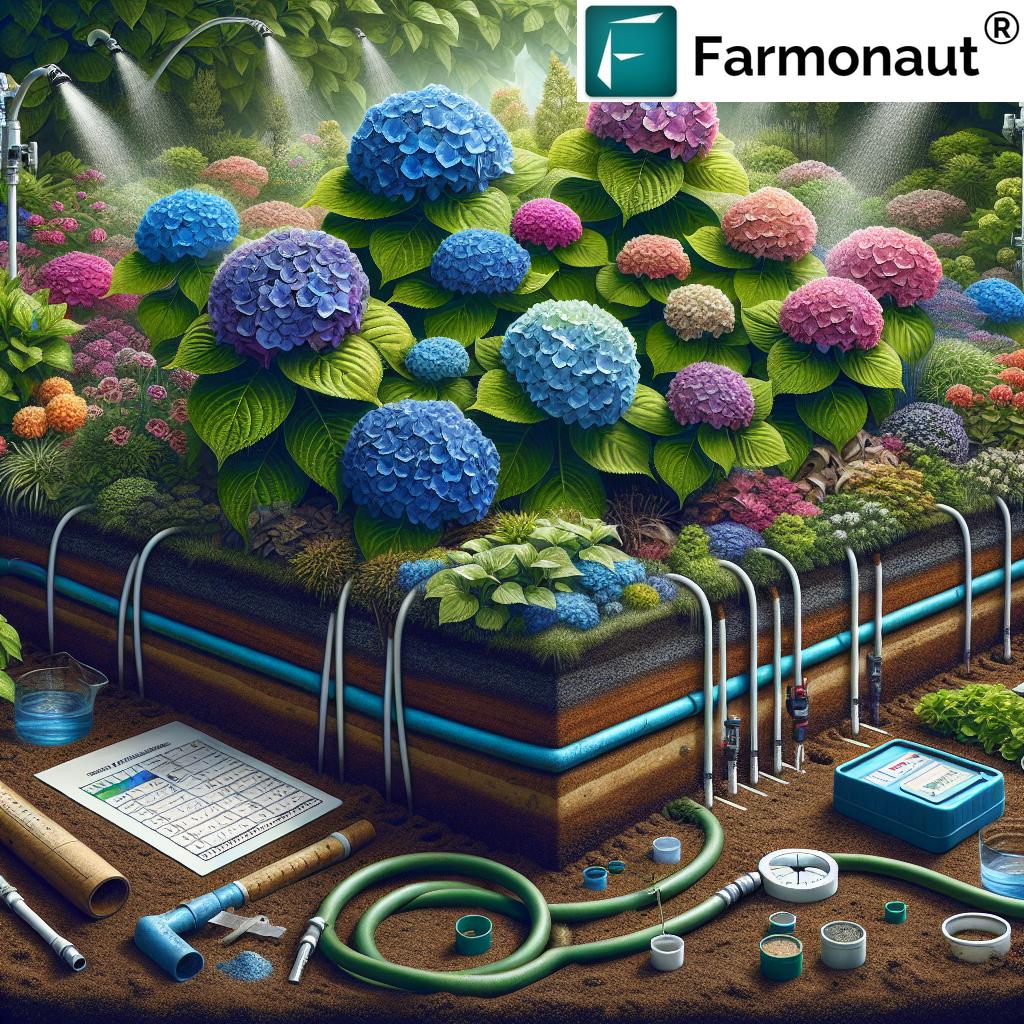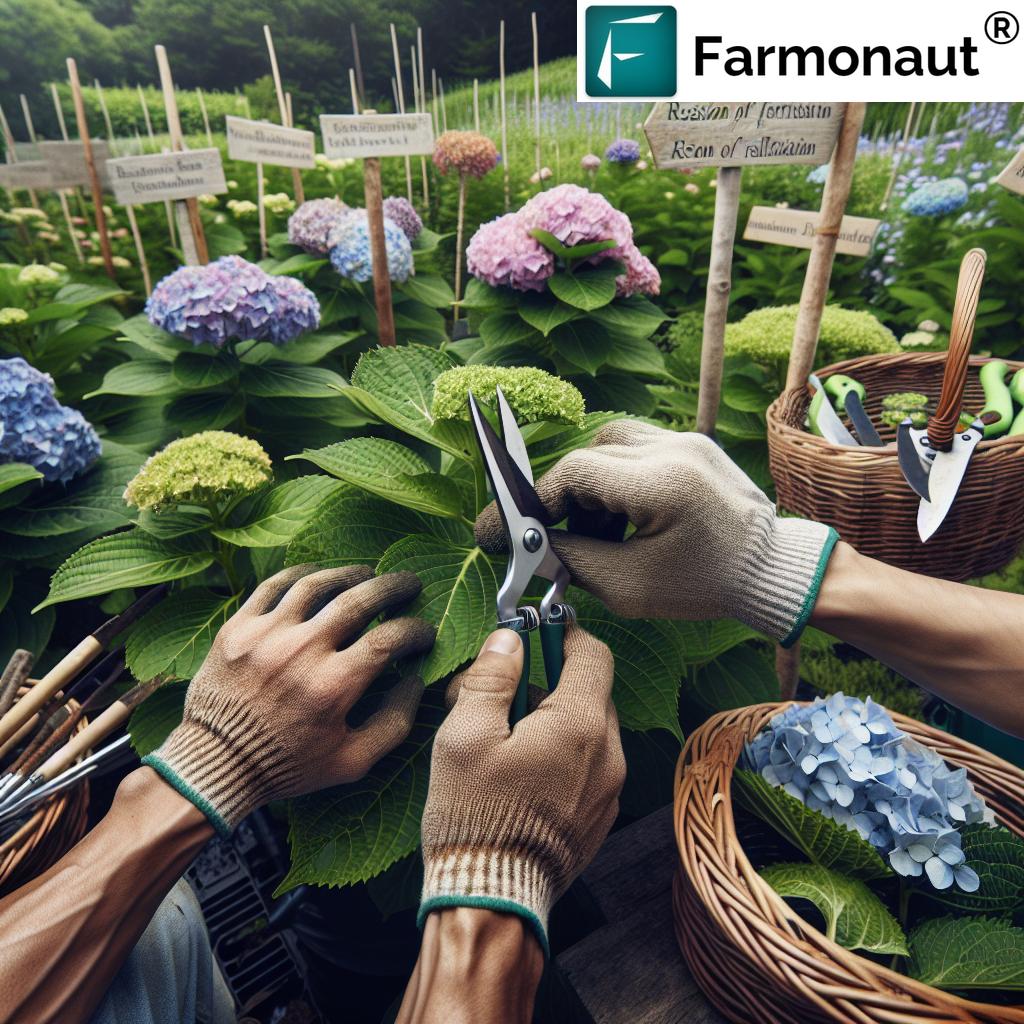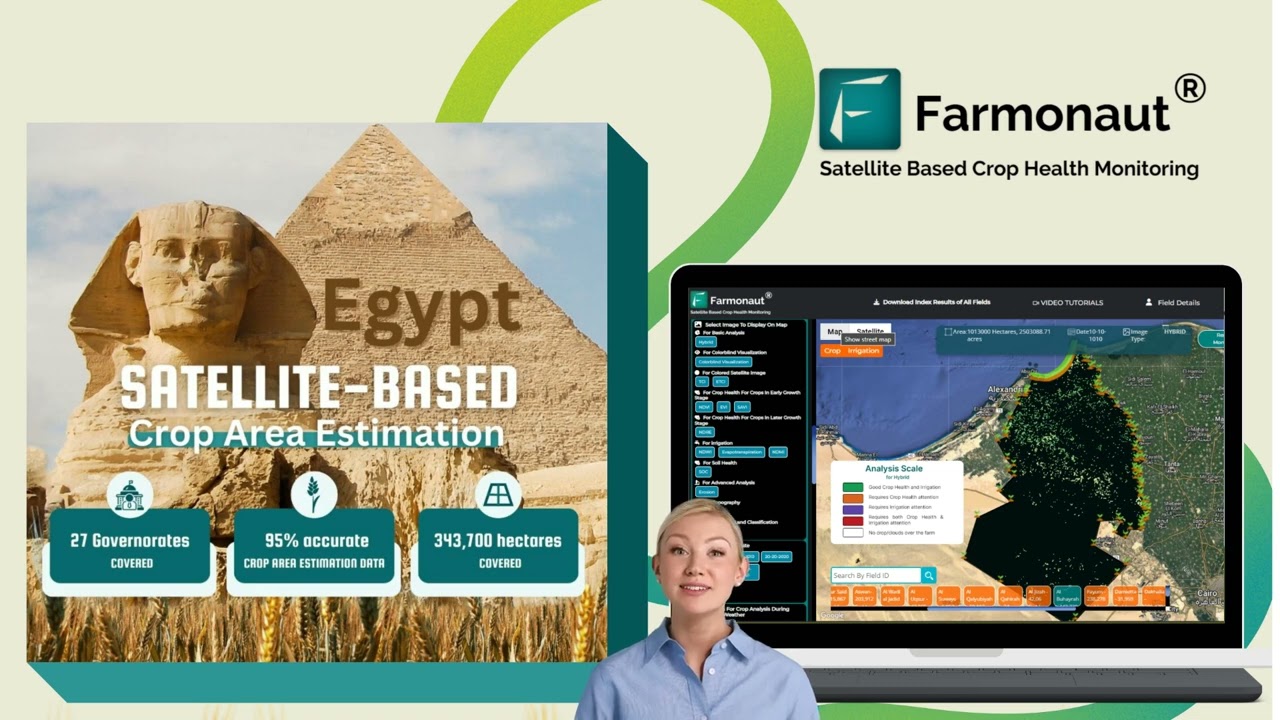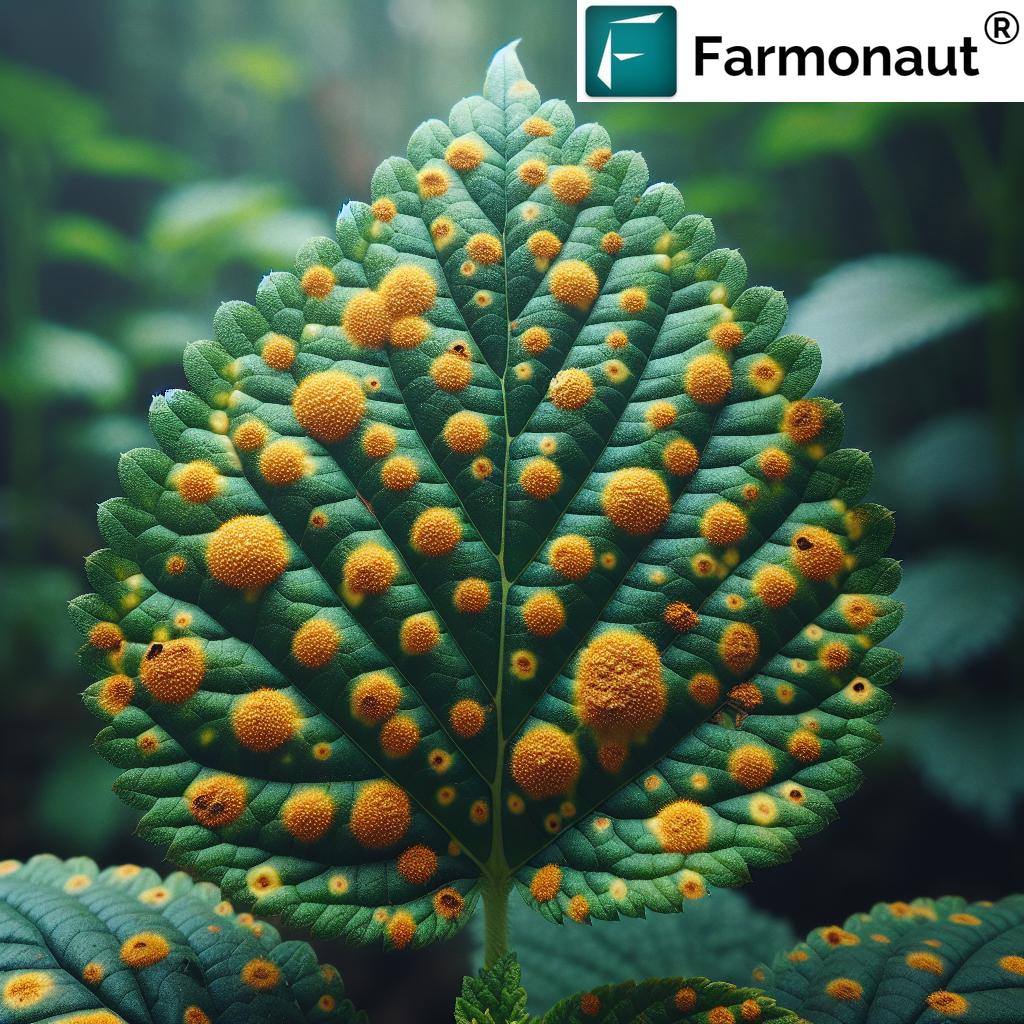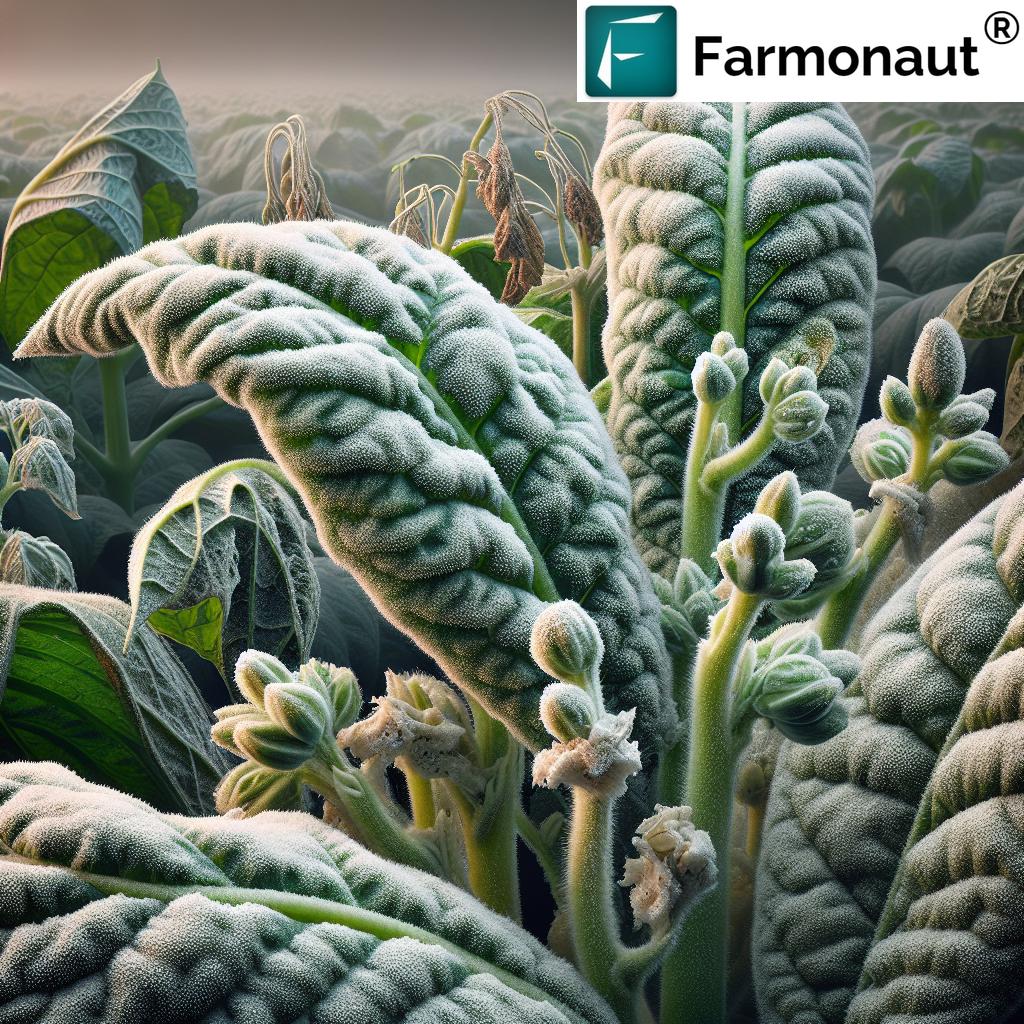Hydrangeas Care: 7 Tips for Lush Blooms & Healthy Soil
Meta Description: Hydrangeas Care: 7 Tips for Lush Blooms & Healthy Soil – Discover expert how-tos on planting hydrangeas, the right soil pH, watering, fertilizer, and pruning practices for gardens, agriculture, and forestry.
“Hydrangeas thrive best in soil with a pH between 5.2 and 6.2 for optimal bloom color and health.”
Introduction to Hydrangeas Care
Hydrangeas are celebrated for their exuberant blooms, classic beauty, and remarkable adaptability. From vibrant garden borders in temperate climates to elegant landscaping in agricultural and forestry settings, hydrangeas offer both aesthetic delight and functional value. To enjoy lush flowers and sustain healthy plants, it’s essential to master their soil, watering, fertilizer, and pruning needs. In this comprehensive guide, you’ll uncover actionable hydrangea care tips, discover hydrangea varieties for different climates, and understand modern techniques for pest and disease management — whether you’re nurturing a small garden or scaling up for wider agricultural landscapes.
Why Prioritizing Hydrangea Care Is Essential
- Gardeners & Hobbyists: Achieve continuous, vibrant blooms and healthy growth with proper planting and care practices.
- Agriculture & Farming: Integrate hydrangeas in commercial or mixed plantations for soil control and landscape enhancement.
- Forestry & Ecosystem Restoration: Utilize hydrangeas for erosion control, wildlife habitat support, and biodiversity in reforestation or agroforestry settings.
Following science-backed guidance on how to plant hydrangeas, hydrangea soil pH, and watering hydrangeas is key to their flourishing across gardens, agricultural, and forestry environments.
How to Plant Hydrangeas: Site Selection & Planting Tips
Getting hydrangeas off to a strong start begins with choosing the right location, soil preparation, and careful transplantation. Whether you’re a home gardener, landscaper, or farm manager, these steps set the foundation for vigorous growth.
Selecting the Best Location and Exposure
- Partial Sunlight: Most hydrangea varieties thrive with full sun in the morning and afternoon shade. In cooler climates, full sun throughout the day can be beneficial. In warmer regions, shielding hydrangeas from harsh midday sun prevents leaf scorch and stress.
- Protection from Wind: Hydrangeas’ broad leaves are susceptible to wind damage. Plant them near a fence or natural windbreak if possible.
- Moisture & Drainage: Avoid low-lying areas that can become waterlogged; ensure soil drainage is excellent to protect the root system.
Step-by-Step: Planting Practices for Hydrangeas
- Soil Preparation: Test and amend the site for ideal hydrangea soil pH (5.5–7.0). Blend in rich, organic compost to increase fertility and moisture retention.
- Dig the Hole: Make a planting hole at least twice the width and same depth as the root ball. This loosens the soil for new root growth.
- Position the Plant: Gently remove the hydrangea from its container, loosen circling roots, and set in the hole. The top of the root ball should be level with surrounding ground.
- Backfill & Water: Refill with amended soil, press firmly, and water thoroughly to eliminate air pockets.
- Mulch: Apply 2–3 inches of mulch (like bark, pine needles, or well-rotted compost) around the base but not touching stems for moisture retention and weed control.
Need help with identifying planting times or climate suitability? Whether you’re growing hydrangeas in your garden or considering large-scale cultivation on agricultural land, the Farmonaut mobile/web app can provide real-time climate and soil insights tailored to your location.
Tip: Take care not to plant hydrangeas too deep. Burying the crown can cause root rot and stunted growth.
Hydrangea Soil pH: Best Soil for Hydrangeas
The secret to maximizing both bloom color and plant vigor lies in understanding (and managing) your hydrangea soil pH. This not only influences flower shades but also impacts nutrient uptake, disease resistance, and the root health of your plants.
Ideal Soil Characteristics
- pH Range: The best soil for hydrangeas is slightly acidic to neutral: pH 5.5–7.0. For the most vibrant bloom colors, aim for a pH between 5.2 and 6.2.
- Fertility & Organic Matter: Ample organic content from compost enriches the soil, improves moisture retention, and boosts beneficial microbes.
- Drainage: Consistent moisture without standing water is vital. Heavy clay can be amended with compost, sand, or finely shredded bark for better permeability.
Regularly check your soil pH using a digital meter or test kit, especially if you’re in regions with high rainfall or changing agricultural practices.
Interested in advanced, satellite-based soil monitoring for large farms or forestry plantations? Explore Farmonaut’s Large-Scale Farm Management Solutions, which provide accurate, field-level insights on soil conditions, moisture, and more for optimized crop and plant health.
“Pruning hydrangeas annually can increase flower production by up to 30% compared to unpruned plants.”
Watering Hydrangeas: Best Practices for Moisture Control
A successful hydrangea grows on consistency. Over- or under-watering are among the fastest routes to stress, wilt, and poor flowering. Mastering watering practices is essential for gardens, agriculture, and forestry plots alike.
How Much Water Do Hydrangeas Need?
- General Rule: Provide about one inch (2.5 cm) of water per week per plant, either from rainfall or supplemental irrigation.
- Deep Watering: Watering hydrangeas deeply but less frequently encourages robust root growth and drought resilience.
Early morning is the best time for watering hydrangeas. This prepares the plants for the day’s heat and reduces risks of moisture-loving disease on leaves.
Tips for Water Management in Different Settings
- Mulch: Maintain a 2–3-inch layer to conserve soil moisture and regulate temperature.
- Check Soil: Hydrangeas wilt if they’re too dry, but soggy soil leads to root rot. Stick your finger 2 inches into the soil; if dry, it’s time to water.
- Irrigation for Agriculture: In larger-scale cultivation, drip irrigation enables even moisture retention and reduces waste.
For advanced, field-specific irrigation guidance, Farmonaut offers AI-driven climate and soil moisture analytics through our mobile/web app—making efficient water use possible even at large agricultural scales. For streamlined plantation and forest management, consider our advisory tools for crop, plantation, and forest management.
Hydrangea Fertilizer Guide: When & How to Fertilize
Smart fertilization means more flowers, brighter colors, and long-term vigor. But overdoing it can result in lush foliage at the expense of blooms. Understanding species-specific needs is crucial.
Choosing the Right Fertilizer
- Balanced, Slow-Release Fertilizer: Look for a formula such as 10-10-10 (N-P-K) and avoid excessive nitrogen to enhance bloom quality.
- Organic Additives: Compost, well-rotted manure, or seaweed extract can be blended into the soil for both macro and micronutrients plus improved fertility.
When to Fertilize Hydrangeas (by Species)
- Bigleaf Hydrangeas (H. macrophylla): Early spring, late spring, and early summer (light applications).
- Oakleaf and Panicle Hydrangeas (H. quercifolia & H. paniculata): Early spring and early summer.
- Smooth Hydrangeas (H. arborescens): Late winter only.
Feeding according to your hydrangea fertilizer guide ensures strong health, disease resistance, and abundant blooms.
Fertilizing Practices for Gardens vs. Agricultural Settings
- In home gardens, top-dress with granular fertilizer and water in well.
- In agriculture, integrate slow-release fertilizer or organic compost into the planting row, or use fertigation with irrigation for large beds or rows.
Use Farmonaut’s Fleet Management solution to efficiently deploy farm machinery for fertilization across large hydrangea plantations, optimizing time and reducing input waste.
Tip: Over-fertilizing leads to “leggy” plants with weak flower production. Monitor growth and color, and adjust fertilizer rates as needed.
Pruning Hydrangeas: Techniques for Each Species
Routine pruning is key to managing shape, spurring healthier growth, and producing more abundant blooms. Not all hydrangea varieties are pruned the same way—knowing your type makes all the difference. Let’s explore pruning hydrangeas by species for the best results.
When and How to Prune
- Bigleaf Hydrangeas (H. macrophylla): Prune right after flowering, typically late summer or early autumn. Remove dead/damaged wood and weak stems; cut old flower heads back to a set of healthy buds.
- Oakleaf & Panicle Hydrangeas (H. quercifolia & H. paniculata): Prune in late winter or early spring, before new growth emerges. Remove up to one-third of the oldest stems to reinvigorate the plant.
- Smooth Hydrangeas (H. arborescens): Cut back to the ground or to strong buds in late winter—this species blooms on new wood.
Annual pruning not only controls shape and size but can boost flower production by up to 30%.
Pruning Guidelines for Disease Management
- Remove dead, diseased, or crossing branches to aid air circulation and prevent fungal problems.
- Always use clean, sharp tools. Disinfect pruners between plants for effective disease control.
For visual reminders and care scheduling, set up custom pruning tasks in the Farmonaut app.
Hydrangea Pest and Disease Control & Management
Hydrangeas are generally tough, but occasional pest and disease issues do arise, especially in humid regions or dense plantings. Proactive management means healthier plants and extended blooming.
Identifying & Controlling Hydrangea Pests
- Aphids: Small, sap-sucking insects that cluster on new shoots and leaves.
- Spider Mites: Cause stippling or webbing beneath leaves during dry spells.
- Scale Insects: Hard-to-spot, protective bumps mainly on stems.
Control:
- Routine inspection of leaf undersides.
- Spray infestations with insecticidal soap or horticultural oil.
- Rinse leaves early in the morning to discourage mites.
Common Diseases & Prevention
- Powdery Mildew: White powdery patches on leaves.
- Leaf Spots/Blight: Brown or purple marks that enlarge during wet weather.
Disease Management Practices:
- Plant with ample spacing for air flow and prune regularly.
- Water at the base—avoid wetting leaves to reduce fungal spread.
- Promptly remove affected leaves and destroy them away from your compost pile.
Advanced field disease detection is possible for agricultural operations with the Farmonaut app and our API Developer Docs for automated pest/disease alerts from satellite data.
Looking to integrate real-time, secure tracking of production and disease management across supply chains? See how our Blockchain Traceability Solutions can support transparency and consumer safety.
Hydrangea Bloom Colors: Adjusting via Soil pH
One of hydrangeas’ most delightful tricks is their ability to change bloom color depending on soil pH. Knowing how to fine-tune shades lets you personalize garden and landscape color schemes!
Color Control by Soil pH
- Blue Blooms: Achieved with acidic soils (pH < 7); add aluminum sulfate.
- Pink Blooms: Result from neutral to alkaline soils (pH > 7); apply garden lime.
- White Varieties: Usually immune to pH changes—color remains white.
How to Adjust Soil pH for Desired Blooms
- Test Soil: Always test before amending to avoid overcorrection.
- Add Aluminum Sulfate: Incorporate into the root zone in early spring to encourage blue hues.
- Add Lime: For pink flowers, use garden lime according to label rates.
- Monitor pH: Re-check every few months—repeat treatments as needed.
Use Farmonaut’s satellite-based soil insights to monitor area-wide soil pH and moisture variations, especially in commercial or forestry settings, enabling targeted amendments with maximum efficiency.
Hydrangeas in Agriculture & Forestry Settings
Hydrangeas are more than ornamental—they have practical uses in agriculture, farming, and forestry projects. Let’s explore how strategic planting and cultivation of hydrangeas can benefit larger landscapes.
Erosion Control & Wildlife Habitat
- Hydrangeas’ strong, fibrous root systems stop soil erosion, especially on slopes or banks prone to runoff.
- Their dense foliage and summer blooms provide habitat and food for pollinators, small mammals, and beneficial insects, promoting biodiversity in agroecosystems.
Hydrangeas for Aesthetic & Economic Value
- Used in agrotourism for attractive, photo-friendly landscapes, increasing revenue potential at farmstays or demonstration plots.
- As windbreaks, hedgerows, or mixed borders in agroforestry, hydrangeas add year-round interest and functional partitioning to fields.
For optimal landscape planning and resource allocation, Farmonaut’s Carbon Footprinting Tool quantifies environmental benefits like sequestration, while our Satellite API and Developer Docs support digital integration for advanced agroecological management.
In agricultural estates or forestry plantations, Farmonaut’s service offers AI-driven, satellite-powered resource management and crop health monitoring—empowering efficient, cost-effective, and sustainable hydrangea cultivation.
Hydrangea Care Quick Reference Table
| Care Aspect | Recommended Practice | Estimated Frequency | Expected Outcome |
|---|---|---|---|
| Soil pH | Maintain at 5.5–6.5; test and amend with lime or aluminum sulfate as needed | Test biannually; amend as needed | Enhance bloom color, optimize nutrient uptake |
| Watering | 1 inch per week; deep watering, mulch to retain moisture | Weekly; daily in hot, dry weather | Reduces wilting, supports deep roots |
| Fertilizer | Balanced, slow-release in spring; avoid excessive nitrogen | 2–3 times (species dependent) | Stronger growth, more blooms |
| Pruning | Prune according to species schedule; remove dead/diseased wood | Annually or after bloom (variety specific) | 30% increased flowers, reduced disease |
| Pest & Disease | Inspect regularly; use insecticidal soap or horticultural oil | Biweekly during active growing season | Early pest detection, healthier plants |
Farmonaut Technologies for Agriculture, Forestry, and Precision Hydrangea Care
At Farmonaut, our mission is to bring the power of satellite-based crop monitoring, AI-driven advisory, and blockchain-backed traceability to every farmer, gardener, and commercial grower. Our technology supports not just large-scale crops, but also the precision management of specialty plants like hydrangeas in gardens, agriculture, and forestry.
- Real-Time Crop Health: Track vegetation vitality, soil moisture, and environmental trends to improve watering and nutrient management.
- AI-Powered Farm Advisory: Receive custom, in-season crop and care suggestions for maximizing yield and plant health.
- Blockchain Traceability: Create secure, verifiable supply chains—ideal for commercial growers selling hydrangeas or integrated crops.
- Fleet & Resource Management: Coordinate farm equipment, schedule tasks (like pruning hydrangeas or fertilizing), and lower operational costs.
- Environmental Sustainability: Use carbon footprint measurement to improve farm sustainability and compliance.
Designed for scalability and accessibility, Farmonaut services are available via iOS, Android, web app, and API (API Access | Developer Docs).
Experience the future of hydrangea care and smarter agriculture with Farmonaut.
Frequently Asked Questions: Hydrangeas Care & Cultivation
1. What is the best soil for hydrangeas?
Hydrangeas prefer rich, well-draining soil with a slightly acidic pH (between 5.5 and 6.5). Incorporate organic compost to boost fertility and moisture retention.
2. How do I adjust hydrangea soil pH to change my flower color?
For blue blooms, lower soil pH (acidic) by adding aluminum sulfate. For pink blooms, raise pH (alkaline) with garden lime. Test and amend every season as needed.
3. How often should I water hydrangeas?
Water deeply once a week with about 1 inch (~2.5 cm) of water, and more during hot, dry periods. Maintain mulch for even soil moisture.
4. When and how should hydrangeas be pruned?
It depends on the species:
- Bigleaf: Prune after blooming.
- Oakleaf & Panicle: Prune late winter/early spring before new growth.
- Smooth: Cut back hard in late winter.
5. Are hydrangeas susceptible to pests or disease?
They’re generally resilient but check for aphids, spider mites, or scale. Fungal issues like powdery mildew can occur if air circulation is poor; manage with regular inspection and prompt action.
6. Why should farms and forestry projects grow hydrangeas?
Hydrangeas offer erosion control, enhance wildlife habitats, and add beauty to landscapes. Their adaptability makes them suitable for agroforestry, reclamation, and agrotourism ventures.
7. Which hydrangea varieties are best for my climate?
Bigleaf hydrangeas (H. macrophylla) excel in coastal, temperate areas. Oakleaf and panicle hydrangeas are hardier and better for colder climates. Always match species and planting practices to your local conditions.
Conclusion & Getting Started: Thriving Hydrangeas in Every Setting
By understanding and implementing these seven core hydrangea care tips—from optimal soil pH and consistent watering to tailored fertilizer routines and targeted pruning—you set yourself up for success. Mastering pest and disease management further secures your plants’ health, while leveraging soil pH lets you customize your blooms. Whether you’re beautifying a backyard, managing a hydrangea field, or designing an integrated forestry project, these strategies deliver reliable, year-after-year rewards.
For larger operations or tech-assisted gardening, Farmonaut is ready to empower you with state-of-the-art, satellite-based crop health monitoring, task management, and transparent supply chains. We deliver science, simplicity, and cost-effectiveness to every farm, estate, and garden.
Ready to cultivate your own lush hydrangea paradise? Embrace these proven care strategies, adopt smart technology for agricultural tasks, and watch your plants—and landscapes—flourish like never before!





